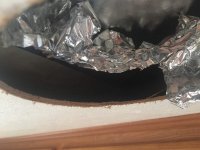StrongJava
Well-known member
I'm looking into projects to make the coach (2008 Bighorn 3670RL) more comfortable. What insulation was installed in the ceiling?
What are the R-factors of the walls?
What insulation (if any) was installed in the front nose cone area?
Do you have any guides for increasing the insulation?
Thanks!
What are the R-factors of the walls?
What insulation (if any) was installed in the front nose cone area?
Do you have any guides for increasing the insulation?
Thanks!

